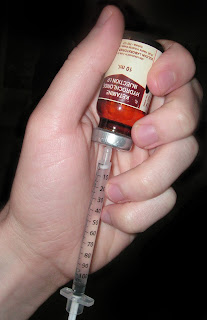Journal Club Summary
Methodology Score: 3/5
Usefulness Score: 3.5/5
Beaudoin FL, et al.
Acad Emerg Med. 2014 Nov;21(11):1193-202
This pilot, double blind, placebo-controlled, randomized trial demonstrates that ketamine at a 0.3mg/kg dose improves pain scores compared to opioids alone for patients with acute moderate to severe pain, but patients receiving this therapy also experienced more adverse events like tachycardia, dizziness and dysphoria. The group found that, while ketamine has potential as a pain adjunct, larger studies that better characterize the benefit and adverse events are needed before ketamine becomes used regularly.
By: Dr. Marko Erak
(Presented Jan 2016)
Epi lesson
Survival Analyses
Survival analyses are used in clinical trials that follow patients over time for primary outcomes such as death, relapse, adverse drug reaction, or development of a new disease. The follow-up time may range from hours to years and a different set of statistical procedures are employed to analyze the data. Terms frequently seen in papers with survival analyses include Cox proportional hazard model, hazard ratio, Kaplan-Meir curve.
Survival analyses are used in clinical trials that follow patients over time for primary outcomes such as death, relapse, adverse drug reaction, or development of a new disease. The follow-up time may range from hours to years and a different set of statistical procedures are employed to analyze the data. Terms frequently seen in papers with survival analyses include Cox proportional hazard model, hazard ratio, Kaplan-Meir curve.
By: Dr. Ian Stiell

Trackbacks/Pingbacks